
Sponsored By:
Learn how to do the best writing of your life—with AI
How to Write With AI is a course taught by Every lead writer Evan Armstrong. You’ll learn how to use AI tools like ChatGPT, Claude, Spiral, and Lex to transform blank pages into powerful content that resonates across the internet. The four-week cohort-based class runs from Feb. 13 through Mar. 6 and includes:
- Live lectures and hands-on workshops
- A writing group overseen by an Every-trained editor
- Interviews with successful internet writers including Every CEO and cofounder Dan Shipper
- 30 days of quick writing exercises
- Your own customized LLM prompt for improving your drafts
- A chance to share your writing with Every’s 90,000-plus readers
The class has already been taken by over 90 students, including founders, aspiring writers, engineers, and university professors. Check out the course website for more information and to enroll:
I'm fascinated with how the smartest people in the world get their work done. That's what Superorganizers is about: seeing all of the little habits that make up a great work day and a great life. Artificial intelligence has changed what it means to be productive and efficient at work, so we decided to revisit some of our favorite interview subjects to understand how their routines have changed in the era of AI models. Recently, we spoke to designer Marie Poulin, newsletter writer Polina Pompliano, former Holloway CEO Andy Sparks, and Indistractable author Nir Eyal. Today, we’re back with Kickstarter cofounder Yancey Strickler.—Dan Shipper
Was this newsletter forwarded to you? Sign up to get it in your inbox.
Kickstarter cofounder Yancey Strickler wants you to think for yourself.
When Every last spoke to Strickler in 2020, he told us how he wrote his book This Could Be Our Future by logging off, shutting off his computer, and covering his Chinatown apartment walls with Post-it notes.
Five years later, he’s back working on another startup—Metalabel, a collaborative platform for making and publishing creative work. And, he told us, he’s still finding ways to “intentionally work in offline ways.”
We caught up with Strickler about Metalabel, his online and offline work, and why he uses a physical scroll to think through ideas. We also discussed his evolving views on generative AI, what it’s good for, and how over-reliance can hinder real creative thought.
Is there any way that your "online" organization has changed since we last spoke in 2020?
In 2020 I was working full-time as an author and community leader—more like a creator than an entrepreneur. Now, I am a full-time entrepreneur once more, and building a project and product informed by much of what I learned from Kickstarter.
Metalabel has a very unusual structure. We think of ourselves as a “heterarchy,” or a fluid hierarchy, where different people have the authority to make final calls depending on the domain. The partner leading design or architecture, for example, is expected to make the final call on whatever’s happening in their domain, rather than all of it laddering up to a CEO. It creates a space where a collection of creative peers can come together and collaborate on the same level. We pair this with a very egalitarian ownership structure, a small team of exceptional people, and a partner-associate model that lets us thoughtfully experiment. It’s been extremely fruitful so far.
We’re also all remote, which sparked some other new ideas about how to work together. The most meaningful for us being metablogging, or having an internal blogging system where we all share deeper thoughts and explorations of what we’re working on, and which we use as our collective brain to debate priorities, build on each other’s ideas, and maintain alignment on a deep level. Metablogging has made bringing on new people much easier as, just like with scrolling, they can do a real-time exploration of the journey that got Metalabel where it is today.
How else has your life and work changed since we talked?
I used Metalabel to publish a new book called The Dark Forest Anthology of the Internet. The book is a collection of pieces starting with my original “Dark Forest Theory of the Internet” essay about how we live and create online. It includes previously published pieces by some major internet all-stars: Venkatesh Rao, Maggie Appleton, Joshua Citarella, Peter Limberg, Caroline Busta, and Lil Internet.
We released the book in physical and digital forms together, selling out a first edition run of 1,000 copies in a couple of days, and are more than halfway through selling out a second larger run. The book and ideas are touching a nerve about how we feel reluctant to show our real selves online, and why we’ve retreated into more private spaces instead.
Because the book was on Metalabel, all the earnings from the book are being seamlessly split between us. Ten percent of each copy sold goes to each author. It all happens transparently. And we’re building a collective treasury we’re using to publish and release work by others too (stay tuned).
You can think of Metalabel as like what you’re doing with Every, but as an open infrastructure for any group of creative people. A way to release work under a shared umbrella where everyone has their own identity and voice, and where you have shared economic outcomes too. We’re just starting to open our doors. Already Brian Eno, Shantell Martin, Josh Citarella, and many others have released work with us.
Your book writing process was very physical, using Post-its and index cards. Have you continued to use these "offline" techniques?
I haven’t used those exact techniques, but I still intentionally work in offline ways.
My favorite tool these days is something I learned from my friend Rob Kalin, founder of Etsy and my cofounder at Metalabel: We use a big scroll of butcher paper to create a live timeline of our thinking about an idea.
When I started working on Metalabel, I got a 50-foot roll of butcher paper and used it to sketch out ideas, unfurling the scroll as I went. I started scheduling “scroll time” on my calendar—hour-long blocks where I had no computer or phone and would do nothing except see where scrolling would take me. Free association, but within the frames that Metalabel explores.
Image courtesy of the author.Working this way has created several big aha moments. Especially if you try visualizing something you normally just think about or do, you begin to see things in new ways. I especially remember seeing the concept of a “record of work” for the first time. I was so excited I immediately made a video about it where you can see the scroll in its native habitat.
The benefits of scrolling are two-fold: first, that it opens up your thinking, and second, that it organically creates a chronological timeline of the project. As I move left to right on the Metalabel scroll, I get to see the idea transform and take shape, step by step. Not everything is here—many developments happened outside of the scroll—but it’s a meaningful, living record of the project that I continue to contribute to and learn from.
Has AI changed the way you do your job or stay organized?
It’s beginning to.
First, I’ve got to admit that I was the guy at parties saying “shut it all down” when it came to AI. Nobody wants this. It’s a creative tool for non-creative people.
Emotionally I can still get there, but my views have become more neutral to positive.
I’ve found AI to be very helpful as a research assistant. The other day I was looking to find language in a specific piece of legislation, but couldn’t remember the particulars. Google was no help. Claude gave me the exact passage immediately. As a writer and entrepreneur, the researching ability is exceptional.
As a thinking companion, however, I think AI hinders our thinking more than we realize. I’ve found myself on day-long Claude benders where I get its thoughts about everything. And at the end of those days my thinking feels like mush. There’s nothing retained. No bone structure to build on.
It’s similar to how you don’t learn a sense of direction if you’re using Google Maps. Instead of learning, we follow. We think we’re automating work but we’re really automating ourselves.
This is the kind of misalignment and distraction that creative people should be wary of. Don’t outsource your thinking. Don’t reduce yourself to being another model. You possess the most important ability of all: to create life, with our bodies, our spirits, and our minds. Don’t squander it.
Is there anything you think people misunderstand about AI and work?
It’s easy to be dazzled by what the models do, which is what makes questioning what powers the models have all the more urgent. My good friend Ian Hogarth wrote a very prescient piece in 2018 called "AI Nationalism" that explores how tech platforms tend to follow the macropolitics of the nation states they come from. Why, then, he asks, should any nation agree to use an AI model that they had not built and trained themselves?
It’s the same for us as individuals. Yes, the AI model will guide us to certain outcomes according to parameters we can tweak and set, but how controllable are those parameters? Is AI ultimately a yet deeper embedding of capitalist values and modern assumptions into an even more untouchable layer that will shape our thoughts and the world around us?
These are hard questions to talk about or understand. I myself struggle with how much credence or trust to give these models, or how to make the most of them as utilities without succumbing to paranoia and fear.
The one miracle I am grateful for is a very personal one: The first time my 7-year-old tried asking ChatGPT a question (which subway line in NYC is the longest), the answer it gave was wrong. My son, obsessed with studying subway maps, immediately knew it was wrong and corrected it. The AI apologized for its error.
Even now, a year later, he will remind me: “The AI isn’t as smart as it thinks it is.” In important ways that only a child can truly see, he’s right.
Scott Nover is a contributing editor for Every. He’s a contributing writer at Slate and the lead writer for the GZERO AI newsletter. He was previously a staff writer at Quartz and Adweek. He currently lives in the Washington, D.C. area.
To read more essays like this, subscribe to Every, and follow us on X at @every and on LinkedIn.
We also build AI tools for readers like you. Automate repeat writing with Spiral. Organize files automatically with Sparkle. Write something great with Lex. Deliver yourself from email with Cora.
Get paid for sharing Every with your friends. Join our referral program.
The Only Subscription
You Need to
Stay at the
Edge of AI
The essential toolkit for those shaping the future
"This might be the best value you
can get from an AI subscription."
- Jay S.
Join 100,000+ leaders, builders, and innovators

Email address
Already have an account? Sign in
What is included in a subscription?
Daily insights from AI pioneers + early access to powerful AI tools
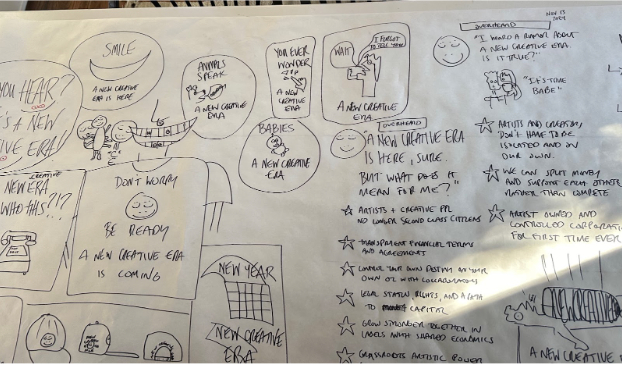
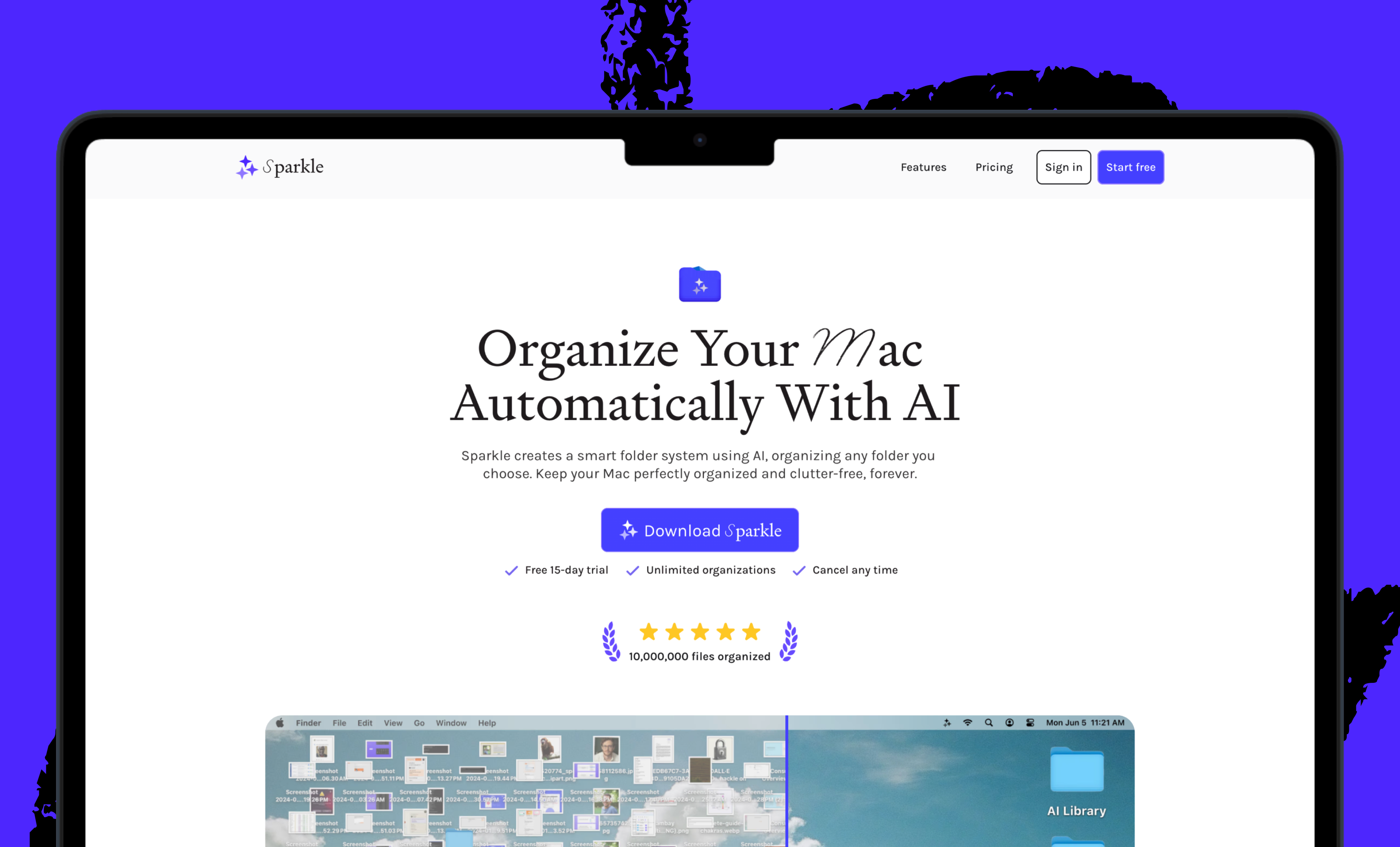
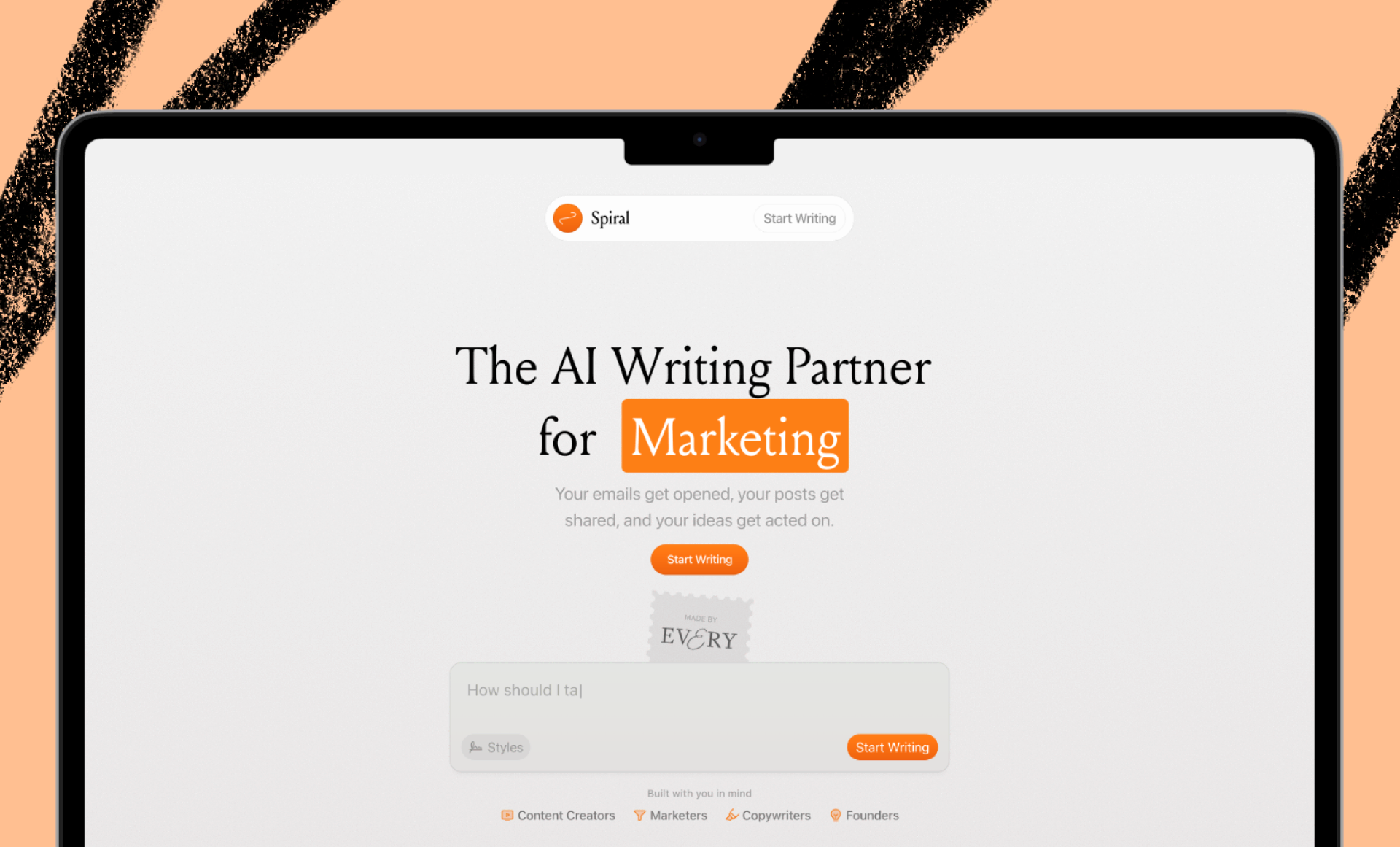
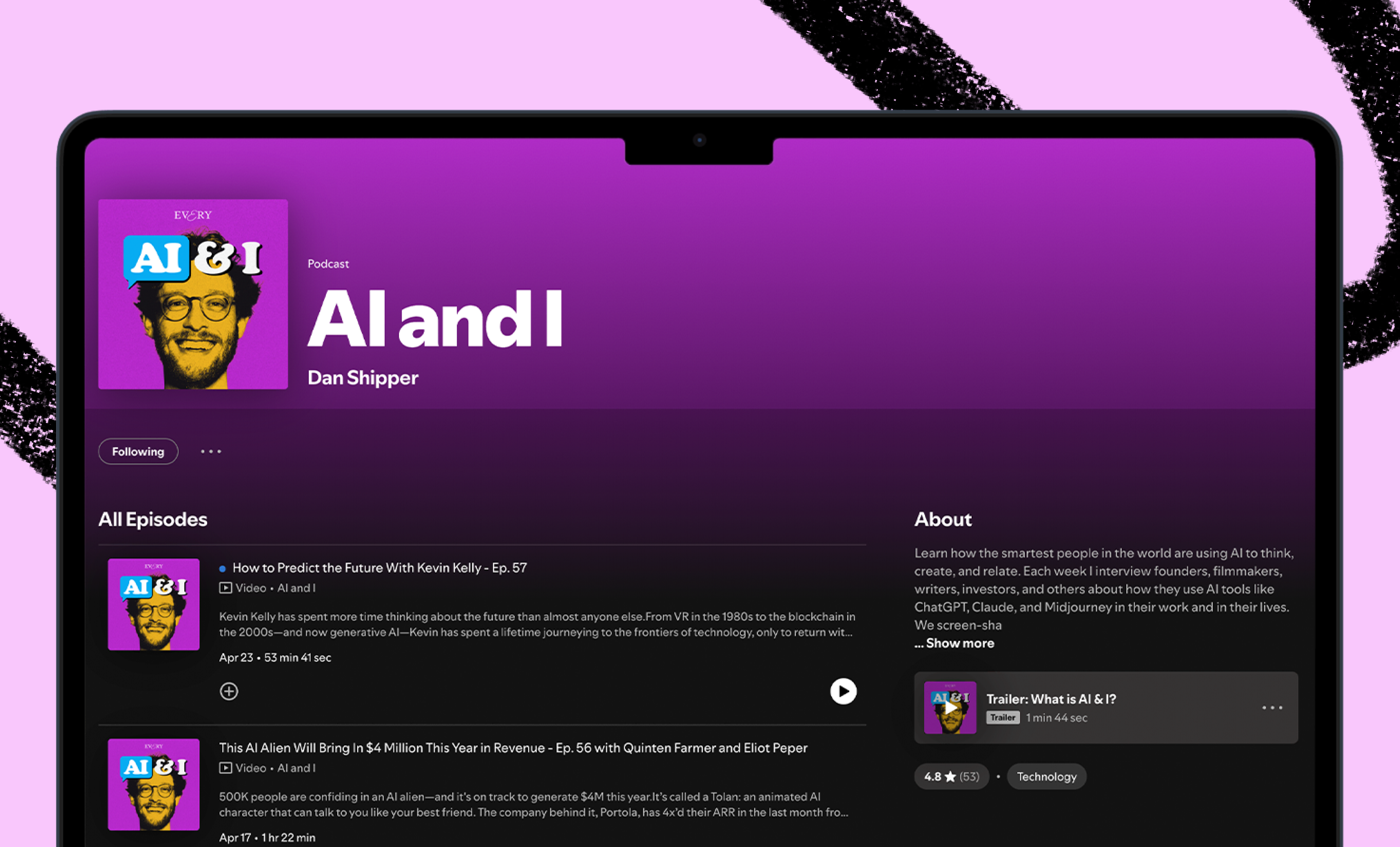
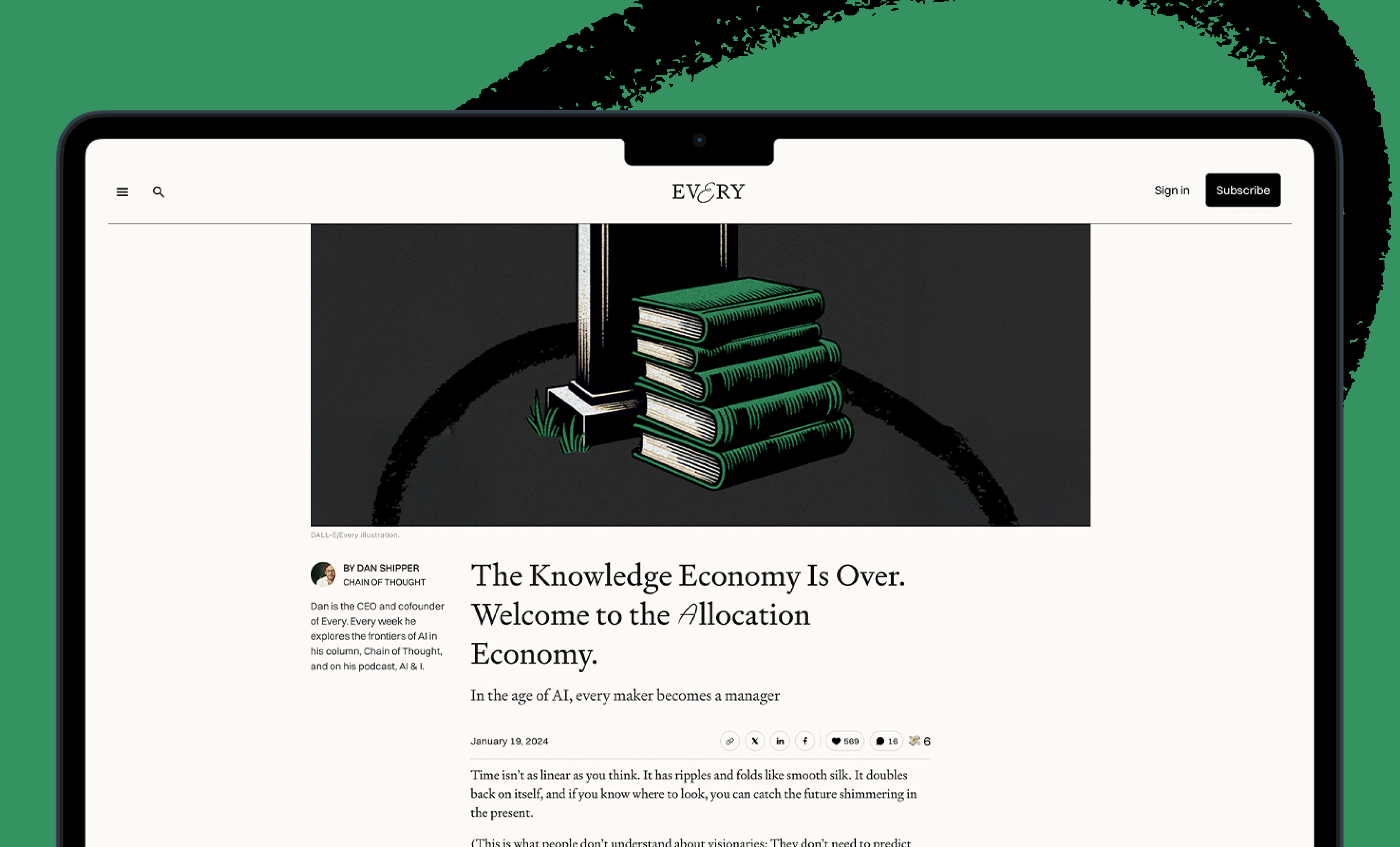
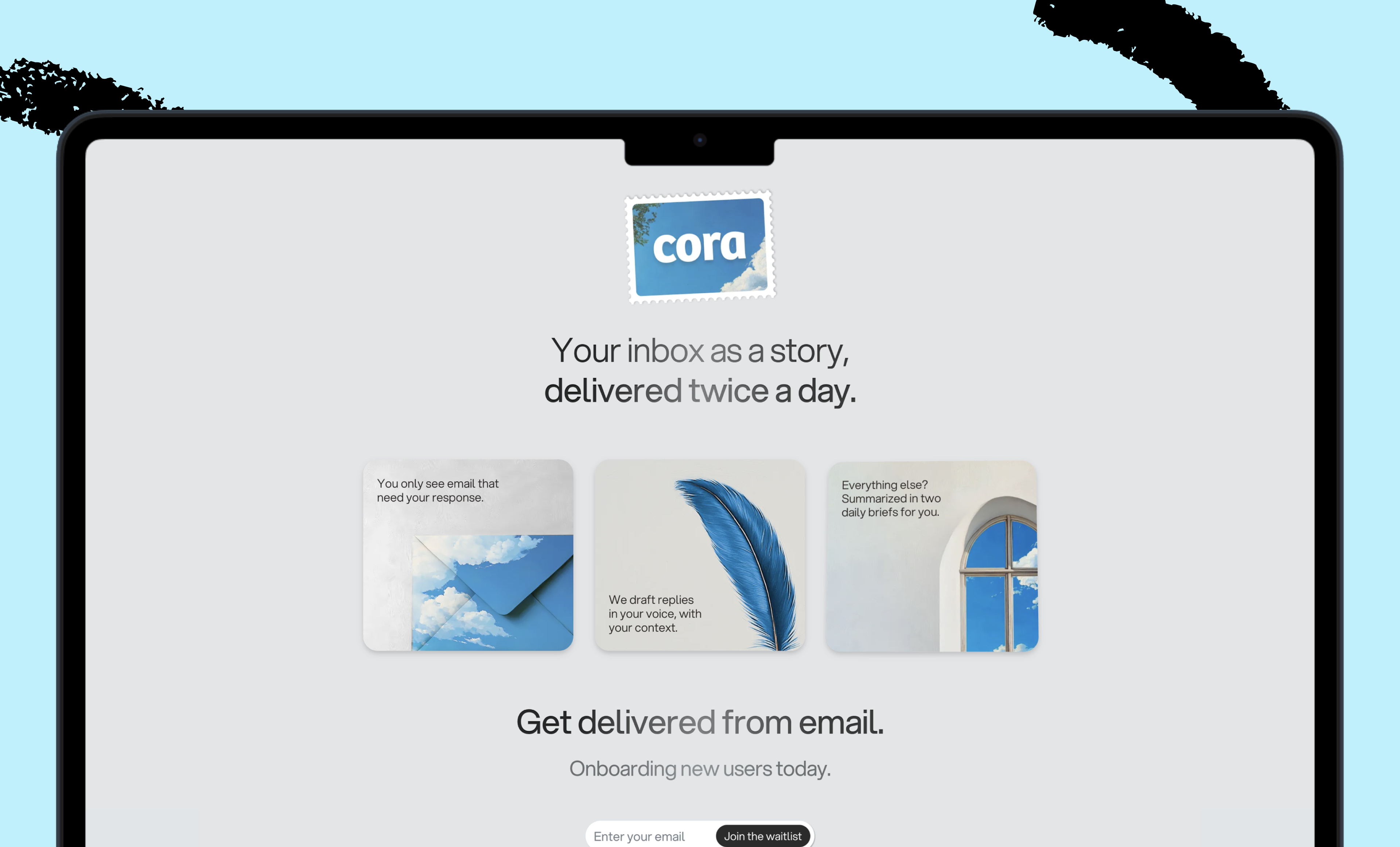
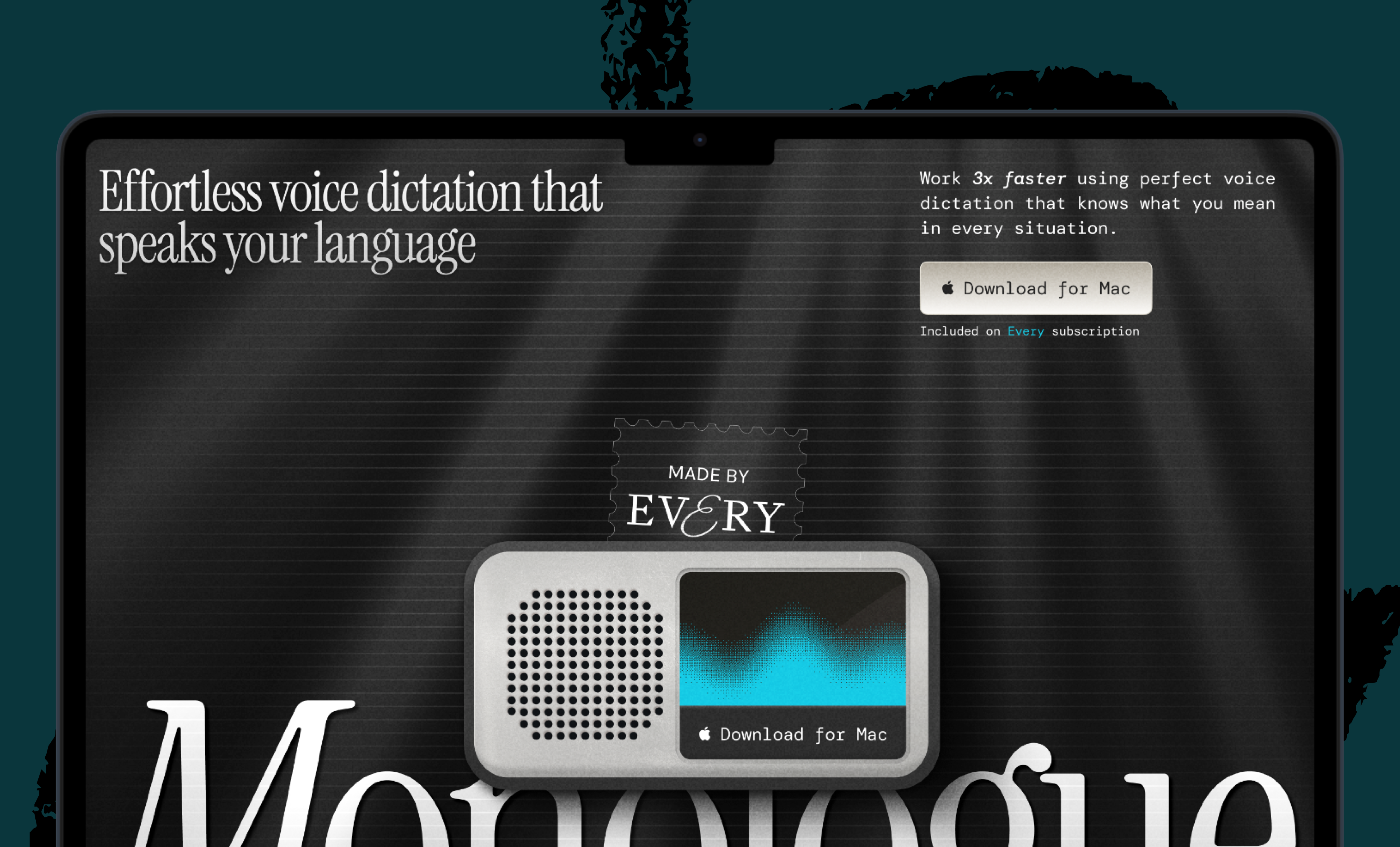
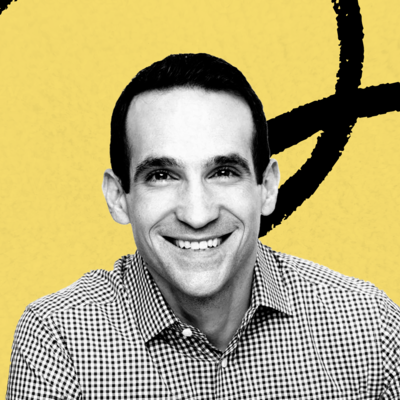
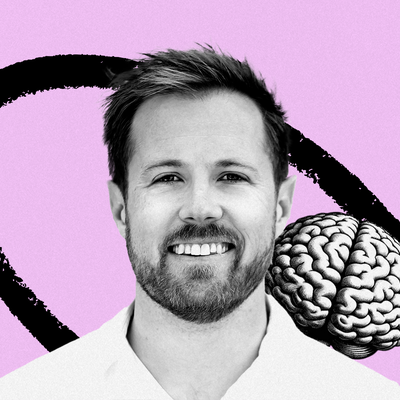
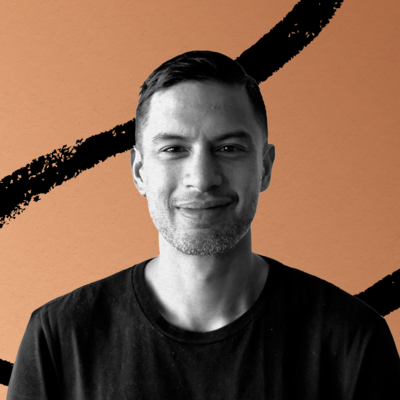
Comments
Don't have an account? Sign up!